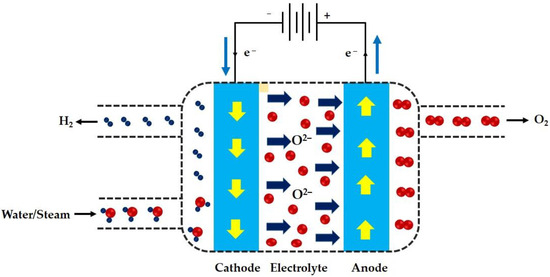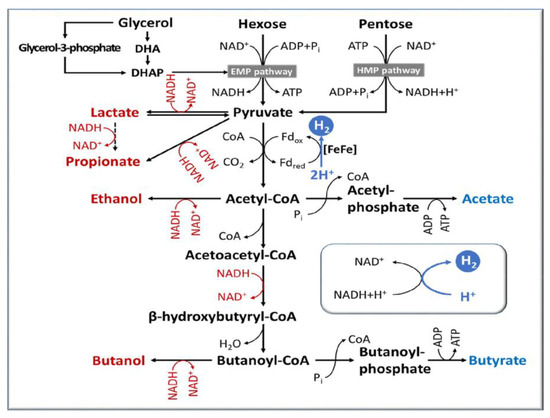Current State and New Trends in Green Hydrogen Energy
Share This Topical Collection
Editors
 Prof. Dr. Giovanni Esposito
Prof. Dr. Giovanni Esposito
 Prof. Dr. Giovanni Esposito
Prof. Dr. Giovanni Esposito
E-Mail
Website
Collection Editor
Department of Civil, Architectural and Environmental Engineering, University of Napoli “Federico II”, 80125 Napoli, Italy
Interests: aerobic and anaerobic bioprocesses; bioreactors; waste-to-bioenergy and added value products; bio-hydrogen; biorefinery; nutrient removal and recovery from wastewater; sulfur cycle; heavy metals; mathematical modelling
Special Issues, Collections and Topics in MDPI journals
 Dr. Viviana Cigolotti
Dr. Viviana Cigolotti
 Dr. Viviana Cigolotti
Dr. Viviana Cigolotti
E-Mail
Website
Collection Editor
ENEA Italian National Agency for New Technologies, Energy and Sustainable Economic Development, Department of Energy Technologies and Renewable Energy Sources, Laboratory of Energy Storage, Batteries and Technologies for Hydrogen Production, Conversion and Use (TERIN-PSU-ABI), 00123 Rome, Italy
Interests: hydrogen production; ammonia; fuel cells; hybrid energy systems
Special Issues, Collections and Topics in MDPI journals
Topical Collection Information
Dear Colleagues,
Green hydrogen is one of the most promising energy suppliers to outcompete conventional energy production based on fossil sources, decreasing greenhouse gas emissions and supporting a circular economy. Typical processes and technologies for hydrogen production, transportation and storage result in CO2 emissions and environmental impact. Green hydrogen produced with renewable fuel sources can contribute to the green energy transition. This Topical Collection will collect feature papers aimed at critically reviewing the current state and discussing the prospects of carbon-neutral technologies for hydrogen production and use.
Topics of interest for publication include, but are not limited to, the following:
- Green hydrogen production;
- Green hydrogen separation and purification;
- Green hydrogen transportation;
- Green hydrogen storage;
- Green hydrogen conversion and utilization;
- Green hydrogen economy and environmental impact.
Prof. Dr. Giovanni Esposito
Dr. Viviana Cigolotti
Collection Editors
Manuscript Submission Information
Manuscripts should be submitted online at www.mdpi.com by registering and logging in to this website. Once you are registered, click here to go to the submission form. Manuscripts can be submitted until the deadline. All submissions that pass pre-check are peer-reviewed. Accepted papers will be published continuously in the journal (as soon as accepted) and will be listed together on the collection website. Research articles, review articles as well as short communications are invited. For planned papers, a title and short abstract (about 100 words) can be sent to the Editorial Office for announcement on this website.
Submitted manuscripts should not have been published previously, nor be under consideration for publication elsewhere (except conference proceedings papers). All manuscripts are thoroughly refereed through a single-blind peer-review process. A guide for authors and other relevant information for submission of manuscripts is available on the Instructions for Authors page. Energies is an international peer-reviewed open access semimonthly journal published by MDPI.
Please visit the Instructions for Authors page before submitting a manuscript.
The Article Processing Charge (APC) for publication in this open access journal is 2600 CHF (Swiss Francs).
Submitted papers should be well formatted and use good English. Authors may use MDPI's
English editing service prior to publication or during author revisions.
Keywords
- hydrogen production
- purification
- transportation
- storage
- utilization
- circular economy
Published Papers (3 papers)
Open AccessReview
A Comprehensive Review on the Power Supply System of Hydrogen Production Electrolyzers for Future Integrated Energy Systems
by
Jianhua Lei, Hui Ma, Geng Qin, Zhihua Guo, Peizhou Xia and Chuantong Hao
Viewed by 900
Abstract
Hydrogen energy is regarded as an ideal solution for addressing climate change issues and an indispensable part of future integrated energy systems. The most environmentally friendly hydrogen production method remains water electrolysis, where the electrolyzer constructs the physical interface between electrical energy and
[...] Read more.
Hydrogen energy is regarded as an ideal solution for addressing climate change issues and an indispensable part of future integrated energy systems. The most environmentally friendly hydrogen production method remains water electrolysis, where the electrolyzer constructs the physical interface between electrical energy and hydrogen energy. However, few articles have reviewed the electrolyzer from the perspective of power supply topology and control. This review is the first to discuss the positioning of the electrolyzer power supply in the future integrated energy system. The electrolyzer is reviewed from the perspective of the electrolysis method, the market, and the electrical interface modelling, reflecting the requirement of the electrolyzer for power supply. Various electrolyzer power supply topologies are studied and reviewed. Although the most widely used topology in the current hydrogen production industry is still single-stage AC/DC, the interleaved parallel LLC topology constructed by wideband gap power semiconductors and controlled by the zero-voltage switching algorithm has broad application prospects because of its advantages of high power density, high efficiency, fault tolerance, and low current ripple. Taking into account the development trend of the EL power supply, a hierarchical control framework is proposed as it can manage the operation performance of the power supply itself, the electrolyzer, the hydrogen energy domain, and the entire integrated energy system.
Full article
►▼
Show Figures
Open AccessReview
Solar-Powered Water Electrolysis Using Hybrid Solid Oxide Electrolyzer Cell (SOEC) for Green Hydrogen—A Review
by
Shammya Afroze, Amal Najeebah Shalihah Binti Sofri, Md Sumon Reza, Zhanar Baktybaevna Iskakova, Asset Kabyshev, Kairat A. Kuterbekov, Kenzhebatyr Z. Bekmyrza, Lidiya Taimuratova, Mohammad Rakib Uddin and Abul K. Azad
Cited by 3 | Viewed by 1730
Abstract
The depletion of fossil fuels in the current world has been a major concern due to their role as a primary source of energy for many countries. As non-renewable sources continue to deplete, there is a need for more research and initiatives to
[...] Read more.
The depletion of fossil fuels in the current world has been a major concern due to their role as a primary source of energy for many countries. As non-renewable sources continue to deplete, there is a need for more research and initiatives to reduce reliance on these sources and explore better alternatives, such as renewable energy. Hydrogen is one of the most intriguing energy sources for producing power from fuel cells and heat engines without releasing carbon dioxide or other pollutants. The production of hydrogen via the electrolysis of water using renewable energy sources, such as solar energy, is one of the possible uses for solid oxide electrolysis cells (SOECs). SOECs can be classified as either oxygen-ion conducting or proton-conducting, depending on the electrolyte materials used. This article aims to highlight broad and important aspects of the hybrid SOEC-based solar hydrogen-generating technology, which utilizes a mixed-ion conductor capable of transporting both oxygen ions and protons simultaneously. In addition to providing useful information on the technological efficiency of hydrogen production in SOEC, this review aims to make hydrogen production more efficient than any other water electrolysis system.
Full article
►▼
Show Figures
Open AccessArticle
Experimental Study of Bio-Hydrogen Production by Clostridium beijerinckii from Different Substrates
by
Venko Beschkov, Tsvetomila Parvanova-Mancheva and Evgenia Vasileva
Cited by 1 | Viewed by 2154
Abstract
Glucose, alcohol stillage and glycerol were used as substrates for bio-hydrogen production by the newly isolated strain
Clostridium beijerinckii 6A1 under batch conditions. High molar yields of hydrogen from the studied organic substrates were observed. There was a neat difference in the metabolic
[...] Read more.
Glucose, alcohol stillage and glycerol were used as substrates for bio-hydrogen production by the newly isolated strain
Clostridium beijerinckii 6A1 under batch conditions. High molar yields of hydrogen from the studied organic substrates were observed. There was a neat difference in the metabolic pathways of substrate digestion when hexose-based substrate or glycerol were used. The products of glycerol digestion showed that a pathway with no formic acid formation as intermediate was probable. In this case, considerable concentrations of acetic and propionic acid (up to 6 g dm
−3) and small amounts of butanol were observed after 48 h. When glucose or hexose-based substrates were used, considerable amounts of formic acid (up to 6 g dm
−3), i.e., the pathway proposed for
Clostridia mixed cultures, were appropriate for the observed process of hydrogen release. For these substrates, considerable amounts of propionic acid in concentrations up to 1 g dm
−3 were observed. That is why the pathway proposed for mixed cultures seemed more appropriate for our experiments carried out with hexose-based substrates. When hexoses were used, substrate digestion stopped the formation of acetic acid, propionic acid and ethanol. Probably, these intermediates are inhibitors to the further digestion to other products.
Full article
►▼
Show Figures









